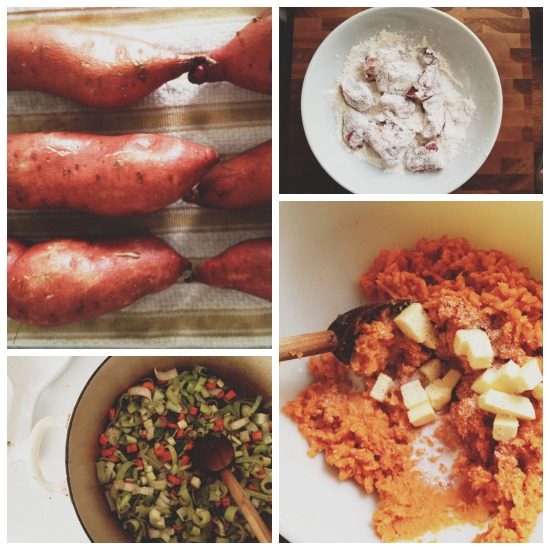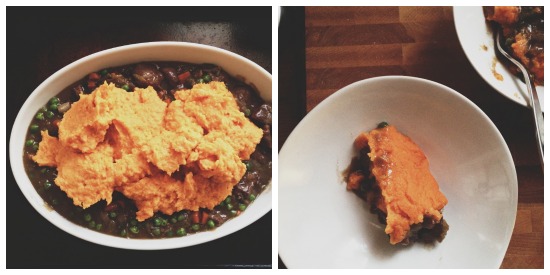
I've had the same keychain for the past 12 years. I received it a few months after turning 18, when I accepted a job to be a lifeguard at my local pool the summer before I left for college. A lifeguard has a few things to carry around at all times, and the red rubber keychain fit around my wrist, keeping my hands free but the pool keys close by. After the summer ended, I put the rest of my keys on it. The key to my dorm room, the car (a white Datsun 280ZX) that I left at home, and the key to my parents house. Then just last week I really looked at it and realized how much time had gone by.
Objects do that. They live with us, day in and day out, and never change. You might not give the ceramic bowl or shell on the shelf any thought, but then one afternoon you walk, tilt your head, and all the history hits you. How long has that dusty frame been there? What did my life look like when I picked up the shell from Moonstone Beach and tucked it into my purse. Why do I still have high school t-shirts wrinkled in the bottom of my dresser drawer? Suddenly, objects are like a mirror held up, reflecting a version of our former selves.
Sometimes objects are very useful, like pots or folders or books. Other times, they create mental and physical clutter. We don't know why we keep things but can't bear to throw them away. We think we will also be throwing away the emotion and meaning we assigned all those years ago.
But the truth is, objects that exist in our private spaces do not age, do not anger, do not even change color or grow bigger or taller. They are not even like plants, who at least live and die and change with the seasons. Their stability foils our instability when we need it, then forces us to remember when we're not expecting it. The objects don't change. We do. That's why they rattle us when we finally take notice of the old pile of photos or a stuffed animal hidden in the back of our closet.

I don't think my keychain is doing anything detrimental to me emotionally, but its time has come, just like the ceramic espresso cups we never use, the champagne flutes from our wedding, the Encyclopedia of Dogs book given to me several Christmases ago, and the Ikea lamp I've had since my first apartment.
All of this reminds me of found poems. Do you remember those? They are like collages, really. It was something assigned in the fifth grade, when teachers were nudging your creative process along. I clipped words and phrases from magazines and glued them to a sheet of paper, like a more permanent version of word magnets.
This is where my thoughts have turned recently. Between giving some serious thought to my keychain, other objects in my house that I no longer need, and long-forgotten recipes stuffed in the bottom of my magazine pile, I feel like I've been resurrecting some lost relics. Everything I'm giving away meant something at the time, but life has changed, my taste has changed, and it's time to let go.
So in the spirit of found poetry, I have a recipe for you, one that I've been wanting to make for two years, and a poem for our new season.
Autumn
by T.E. Hulme

Adapted from Anne Burrell and inspired by Wolfgang Puck
I had just seen Anne Burrell make shepherd's pie on the Food Network, and several days later we ate at Spago, where Wolfgang Puck's dish used sweet potatoes instead of Yukon's. Here, I've combined the best of both dishes. It might be two years late, but I can think of nothing better to usher in fall. Be sure to sear the lamb in several batches to ensure browning.
2 pounds grass-fed lamb shoulder, cut into 1-inch pieces
1/2 cup flour
2 large leeks, cut into 1/2-inch dice
3 celery ribs, cut into 1/4-inch dice
3 carrots, peeled and cut into 1/4-inch dice
2 garlic cloves, minced
1 cup red wine
3-4 cups chicken stock, plus more if needed
10 sprigs of fresh thyme, leaves removed
1 cup frozen peas
For the potatoes
2 pounds sweet potatoes (about 4 large)
3/4 to 1 cup whole milk or cream
2 to 3 tablespoons cold butter
Coat a Dutch oven with olive oil over medium-high heat. Season the lamb with salt and toss with the flour in a large bowl until lightly coated. Add the lamb to the pan in batches and brown well on all sides; remove.
Add more oil, then pour in the leeks, celery and carrots. Stir to coat and season with salt. Cook for 8-10 minutes, until softened. Add the garlic and thyme and cook for another 2-3 minutes. Add the lamb back to the pot and stir to combine. Add the wine and cook until it reduces by half. Add enough stock to just cover the surface of the lamb and simmer, partially covered, for 1 hour, or until the lamb is tender. If the stock reduces too much, add more (you can also add water), 1 cup at a time as needed.
While the filling cooks, make the potatoes. Peel and cube the potatoes and steam in a double boiler until tender, about 15 minutes. Pass through a food mill, then add the butter, milk, and some salt. Stir well until combined and the potatoes are creamy.
When the lamb is ready, it should be thickened like a stew. Preheat the oven to 450 degrees and add the peas to the lamb. Stir to combine and let everything sit off the heat until the peas thaw, about 10 minutes, then pour the filling into a large baking dish. Gently spread the potatoes on top using an icing spatula. Bake for 15 minutes, or until the top is golden brown and slightly crisp.


